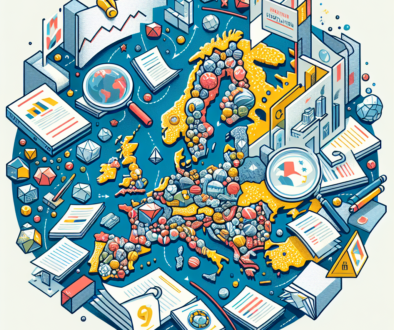European Union Novel Foods: A New Food Innovation Era
Introduction to European Union Novel Foods
In the European Union (EU), a new category of foods, known as “European Union novel foods,” has emerged. These foods were not commonly eaten in the EU before May 15, 1997. This article delves into what these foods are and their various categories.
Simplified Overview of EU Novel Foods
Firstly, European Union novel foods include those with new or intentionally altered molecular structures. These are foods whose molecular make-up was not commonly found in EU diets or used as ingredients before May 15, 1997.
Foods from Microbes, Fungi, and Algae
Secondly, some European Union novel foods come from microorganisms, fungi, or algae. This group covers foods made up of these organisms or derived from them.
Mineral-sourced Foods
Thirdly, we find European Union novel foods from minerals. These foods originate from mineral sources and include those separated or produced from such sources.
Plant-based Novel Foods
Next, plant-based foods are a significant part of European Union novel foods. This category excludes plants with a safe consumption history in the EU and those obtained by traditional breeding methods known before May 15, 1997.
Animal-derived Foods
European Union novel foods also include those derived from animals, but this excludes animals bred by traditional methods in the EU before May 15, 1997, and foods from such animals known to be safe for eating.
Cultured Foods
Then, there are foods from cell or tissue cultures derived from animals, plants, microbes, fungi, or algae. These are a unique and growing part of the European Union novel foods.
Foods from New Production Processes
Also, European Union novel foods include those from new production processes. These processes, not used in the EU before May 15, 1997, change the food’s composition significantly.
Engineered Nanomaterial Foods
Moreover, some European Union novel foods consist of engineered nanomaterials. These are specially designed at a microscopic level for specific uses in foods.
Vitamins, Minerals, and Other Substances
Further, the category includes vitamins, minerals, and other substances used according to specific EU regulations, involving new production processes or containing nanomaterials.
Foods Previously Used in Supplements
Lastly, there are foods that were only used in dietary supplements before May 15, 1997 but are now intended for other food types. This marks a significant expansion in the range of European Union novel foods.
Understanding the EU’s “Traditional Foods from Third Countries” Category
The European Union (EU) classifies certain traditional foods originating from third countries as new types of food, distinct from the ten categories typically recognized within the EU. These foods, obtained through primary processing methods such as agriculture, breeding, or even hunting (for wild products), have confirmed safety in terms of their composition and other aspects. Significantly, they must have a history of safe food use, being consistently consumed by the majority of a population in at least one-third country for over 25 years.
This classification of traditional foods from third countries in the EU is subject to different documentation requirements and evaluation processes compared to the standard ten categories. It’s important to note that the EU’s definition of new foods excludes genetically modified foods, food enzymes, food additives, food flavorings, and solvents used in food and food ingredient production.
Summary
The article provides an insightful overview of “European Union novel foods,” a category encompassing foods that weren’t widely consumed in the EU before May 15, 1997. It explains various types of these novel foods, including those with new molecular structures, those derived from microorganisms, fungi, algae, minerals, and plants, as well as animal-derived foods. The article also discusses foods developed from new production processes, foods made of engineered nanomaterials, and substances like vitamins and minerals processed through new methods. Finally, it mentions foods previously used only in dietary supplements but now intended for broader use. This exploration into the European Union’s novel foods highlights the union’s commitment to innovative, safe, and diverse food options.












